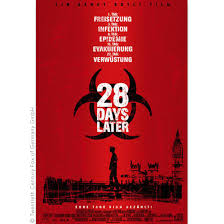
Introduction
Released in 2002, “28 Days Later” is more than just a British horror film; it is a groundbreaking piece that redefined the zombie genre. Directed by Danny Boyle, this film not only changed perceptions of zombie narratives but also blended psychological thrillers with social commentary, establishing its relevance in today’s entertainment landscape.
Plot Overview and Cinematic Techniques
The story begins in a post-apocalyptic London, where a mysterious virus unleashes chaos, transforming humans into rage-fueled creatures. The film follows Jim, played by Cillian Murphy, who awakens from a coma to find the world decimated. What set “28 Days Later” apart was its innovative use of digital cinematography, which added an unsettling sense of realism through gritty visuals and atmospheric ambiance. The haunting score further enhanced the emotional depth of the film, leaving a lasting impression on audiences.
Cultural and Industry Impact
“28 Days Later” not only became a box office success grossing over $85 million worldwide on a modest budget of $8 million but also inspired a new wave of zombie films. Its influence can be seen in various aspects of modern horror cinema, including the popular revival of zombie narratives in shows like “The Walking Dead” and films such as “World War Z”. The fast-moving infected introduced a different kind of fear compared to the traditional slow-moving zombies, compelling filmmakers to rethink their interpretations of the genre.
Social Commentary and Themes
The film also touches on themes of survival, the collapse of society, and human morality in extreme circumstances. It presents a dystopian reflection of contemporary society’s fears and critiques of government responses to crises. This layered storytelling proved to be a significant talking point among critics and scholars, sparking discussions about the social implications of horror narratives.
Conclusion
In conclusion, “28 Days Later” remains a powerful staple in the horror genre, melding horror with thoughtful commentary and original filmmaking techniques. Its impact resonates strongly today as horror continues to evolve and push boundaries. As filmmakers look for ways to adapt or redefine genres, the legacy of “28 Days Later” serves as a reminder of the potential of horror to reflect societal anxieties and incite conversations about our collective experiences. It’s a film that not only entertained audiences in the early 2000s but also paved the way for future stories within the genre.



